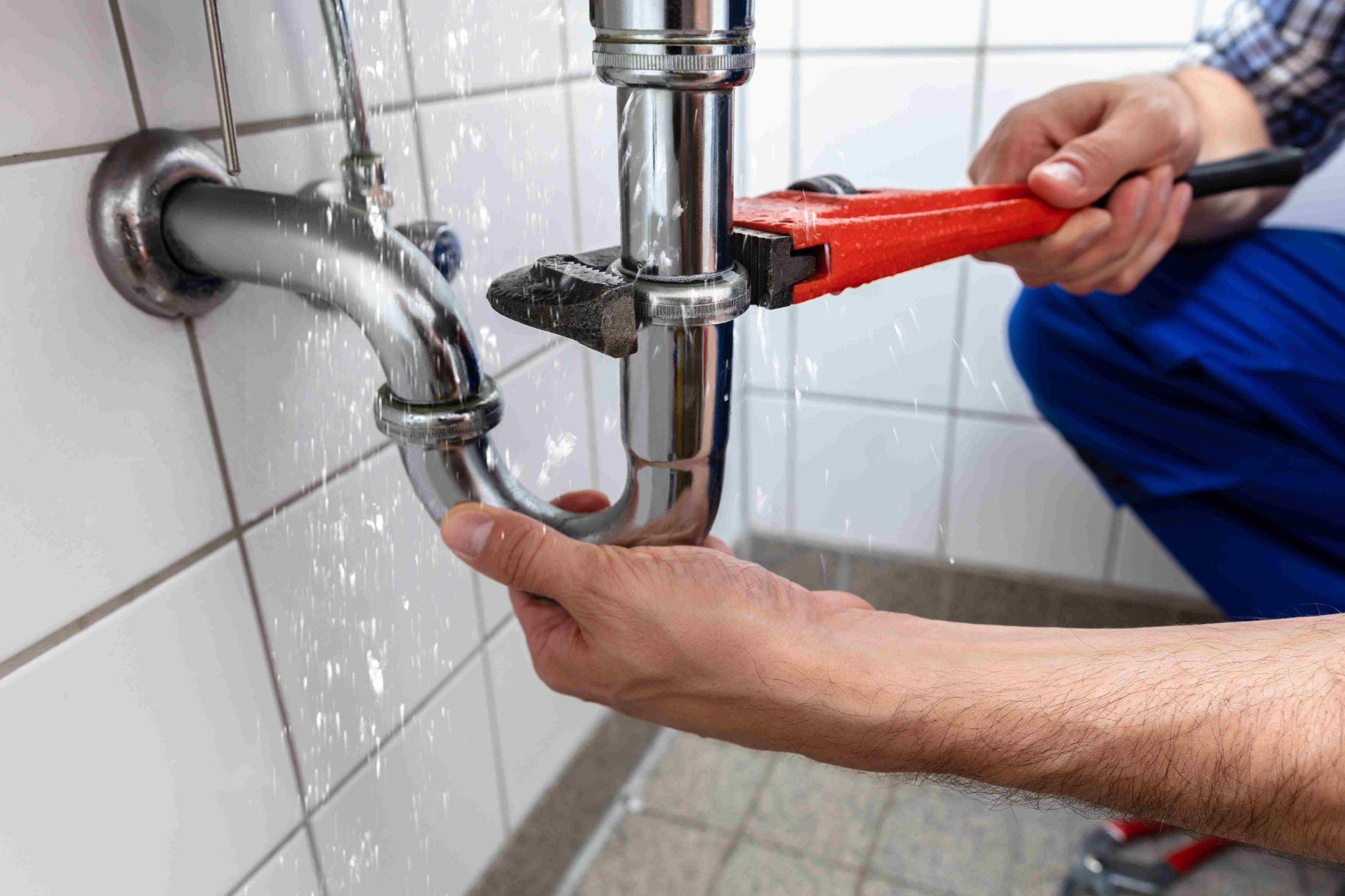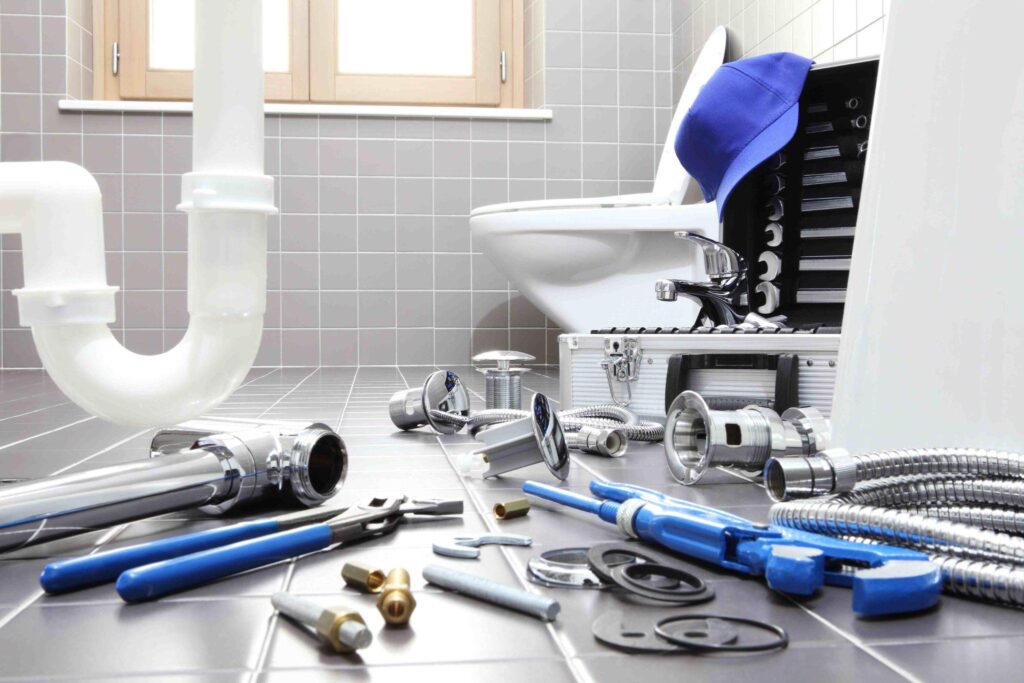There are plumbing projects that are relatively simple. With relative knowledge and DIY passion, you can get them done and dusted. But there are those that demand more than just know-how. They are best left for professional contractors who know the ins and outs. Here are a few of those projects:
Whole-House Repiping
Over time, your home’s plumbing system can get clogged or worn out. If yours are old, say, copper pipes from the ’70s or galvanized steel, low water pressure or rusty water issues may become apparent. Repiping is an option in this case.
This often means replacing all the old pipes in your house with new ones. This could be PEX (a flexible plastic), copper, or another material. It’s not something you’d want to take up as a DIY plumbing project unless you’re already experienced. Why? Because it involves cutting through walls, replacing pipes behind those walls, and ensuring everything connects properly without leaks.
Now, if you try to do this yourself, you risk damaging drywall, misaligning connections, or worse, creating new leaks. Getting in touch with a plumbing contractor in Lakeway or others close to you can keep these negative outcomes at bay. They have the tools and expertise to handle your plumbing business while minimizing disruptions and ensure the job gets done right.
Sewer Line Replacement or Repair
Your sewer line carries waste away from your home. When it fails, you may find sewage backing up into your bathtub. Common signs of sewer line trouble include slow drains everywhere, gurgling sounds coming from toilets or sinks, or wet spots in your yard.
If any of these sound familiar, call a pro immediately. They’ll likely use a sewer camera to inspect the line. These cameras let them see exactly what’s going on inside. They’ll then figure out repair options that go with the issue.
For minor problems, they might clean the line using hydro-jetting. But if the damage is severe, replacement may be necessary. Now, why shouldn’t you attempt this alone?
For one, sewer lines connect to public systems. You need permits to get down that road, so to speak. Also, excavation can destroy landscaping. Some contractors now offer trenchless repair methods. Instead of digging up your whole yard, they pull a liner through the existing pipe and solve the plumbing issue.
Main Water Line Replacement

The main water line brings fresh water into your home. If it bursts or becomes blocked, you’ll have no water. In addition, there are potentially expensive repairs to worry about.
Signs you might need replacement include discolored water, sudden drops in water pressure, and sometimes, leaks near the street. Replacing this line often requires digging up part of your yard or driveway.
Contractors coordinate with utility companies to shut off the main supply safely. Then they replace the damaged section with durable materials like PVC or copper. Trying to DIY this will very likely be a recipe for disaster. You could accidentally cut other underground lines or leave weak spots that cause future leaks.
Bathroom or Kitchen Remodeling
Moving fixtures around during home improvement processes can change your plumbing setup. Say you’re relocating a toilet or adding a second sink in your kitchen. Those require rerouting pipes, which can easily get complicated.
Professionals ensure proper drainage slope so water flows smoothly. They also correct venting to prevent odors, all while staying compliant with building codes.
Plus, they handle permits and inspections. Without those, your remodel won’t pass city standards. Save yourself the stress and hire someone who knows the ropes.
Backflow Prevention Device Installation
Backflow devices stop contaminated water from flowing back into your drinking supply. In many areas, they are a legal requirement, so you may not escape them. Far from what the government demands, they are also good for your health.
Say you have an irrigation system. Without a backflow preventer, chemicals from fertilizers could seep into your tap water. Installing one involves connecting it between the water source and the system, then testing it regularly to confirm it’s functioning. There’s very little margin for error in this installation process, which is why you’d rather leave it to the experts.
Tankless Water Heater Conversion
Switching to a tankless water heater offers endless hot water and energy savings. But converting demands more than just swapping units. First, your plumber assesses whether your current plumbing and electrical systems can support a tankless model.
If not, upgrades are necessary. Then they install the new unit, adjusting pipe sizes and venting as needed. Without expert guidance, you could end up with a system that doesn’t meet your needs.
Closing Thoughts
These are just a few plumbing projects that absolutely require a professional touch. Sure, some smaller tasks are fine for DIYers. But when it comes to big-ticket items, don’t take chances. Do your research. Look up the different experts available, the services they offer, their quotes, and so on. When you find one that meets your needs and budget, consider involving them in your big project.

